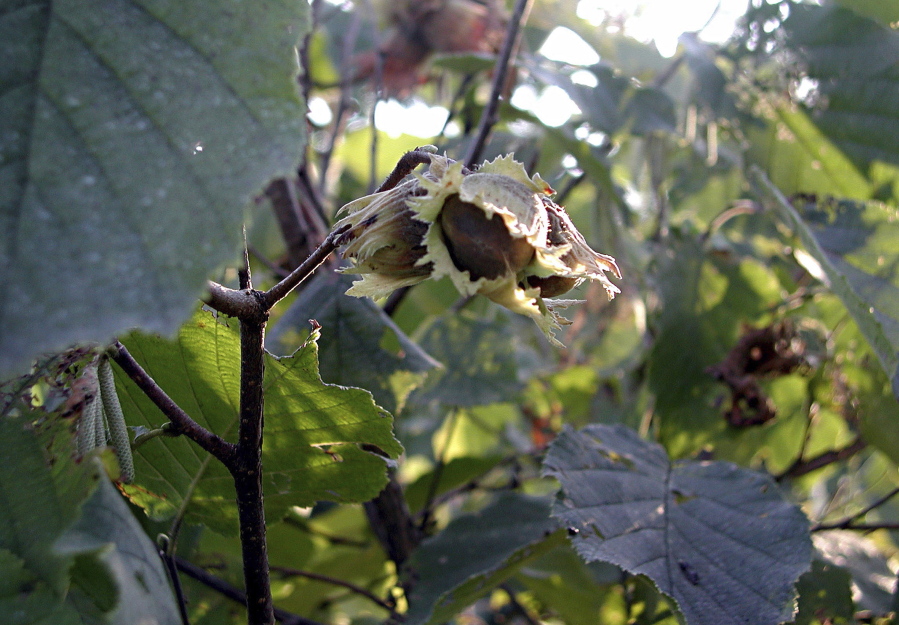Things are getting nutty around my garden. Literally. The squirrels have been doing a lot of nut planting, and I’ve planted some myself, including chestnuts, heartnuts, pine nuts and hazelnuts.
The hazelnuts (also known as filbert nuts) have been especially satisfying. Unlike the squirrels, I have planted hazelnuts shrubs I bought from a nursery rather than just nuts.
The plants, which grow as large, multi-stemmed shrubs or small trees, are attractive, especially in winter when their catkins (male flowers) dangle gracefully from the bare branches.
My first planting was of seedling shrubs of American hazelnuts (Corylus americana), a short hedge of them. The plants bore in three years, and each autumn their leaves lit up in fiery colors. Unfortunately, the nuts themselves weren’t worth eating; they were small and had poor flavor.
So a few years after that first planting, I planted more hazelnuts, but this time of named varieties — that is, clones selected or bred for bearing large and flavorful nutmeats. Such plants would be pure species or hybrids involving European hazelnut (C. avellana), a different species than American hazelnut.
These European hazels are commonly called filberts. These are the nuts you find in supermarkets, and they’re generally grown either in the Mediterranean region of Europe or in the Pacific Northwest.
Enter, a disease
A disease called filbert blight is what has historically kept people from growing filberts in the eastern U.S. This indigenous disease has little effect on our native hazelnuts but can be devastating to the European ones.
The “blight” in the name says it all: collapse and death of branches, the shriveled leaves forlornly still clinging. A more telltale symptom is lines of raised, dark bumps running along the branches. The disease can go undetected for years because it has a long cycle and latent period; 10 years could go by before a tree is killed.
Work around for disease
Pruning and spraying are two ways to deal with the blight. But even better — to deal with most pest problems for any plants — is to plant resistant varieties.
Many years ago, blight found its way to the commercial filbert orchards of the Pacific Northwest, which had the positive effect of prompting the search for, and breeding of, high-quality filbert varieties that would not succumb to the disease.
Hall’s Giant and Willamette were, early on, identified for being somewhat resistant, and the former variety made it into my yard. After some time, along came Lewis, Clark, and Tonda di Giffoni, all three even more resistant to the blight. And all three have found their way into my yard. Most recently, the varieties Gamma, Delta, Epsilon and Zeta have been bred; they’ll be in my yard sometime soon.



